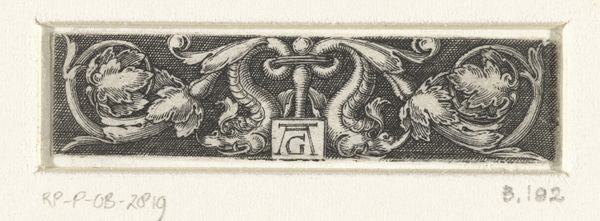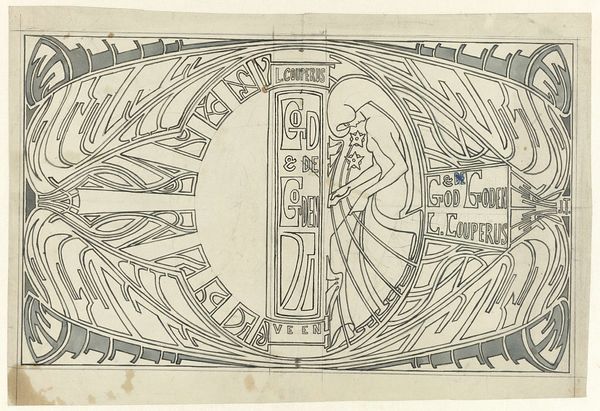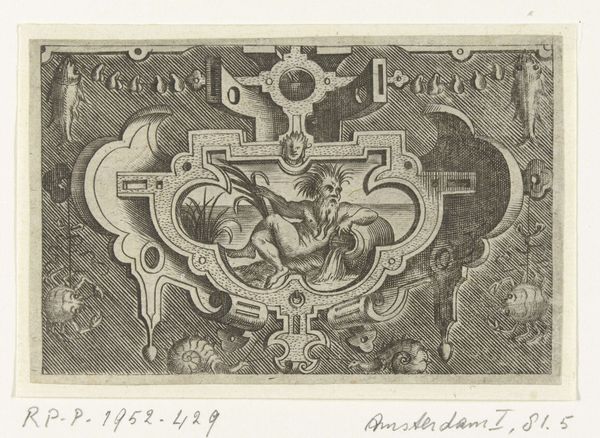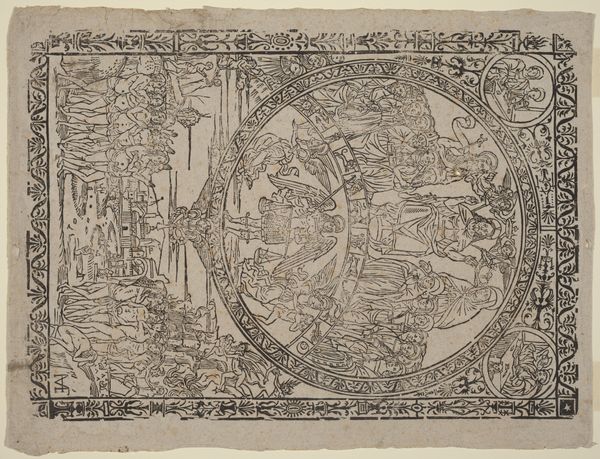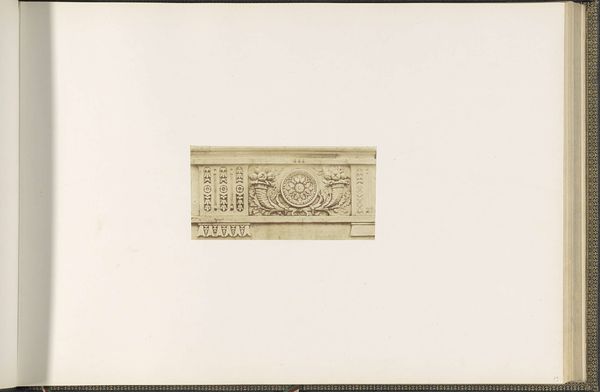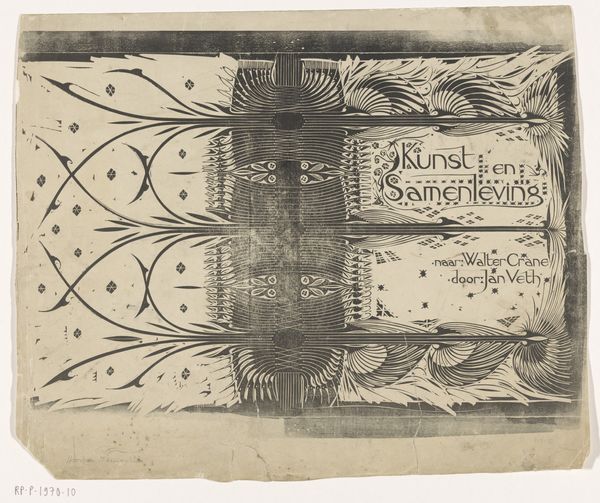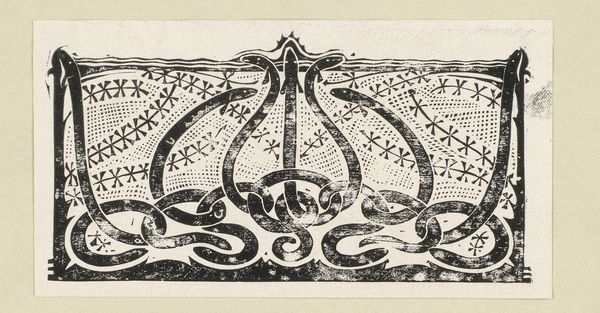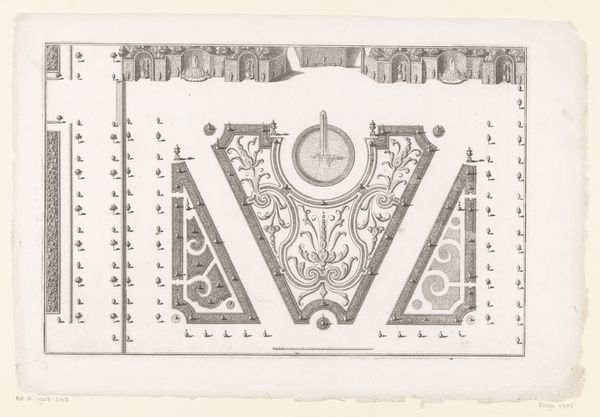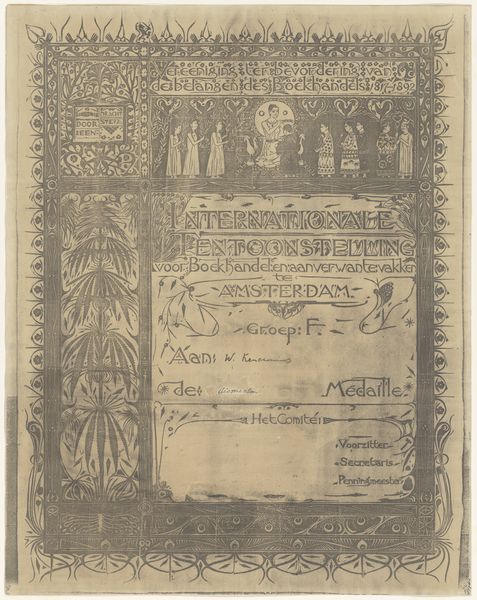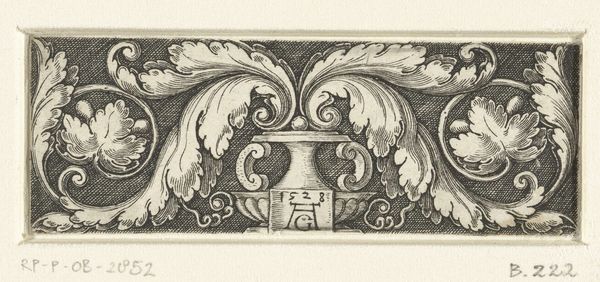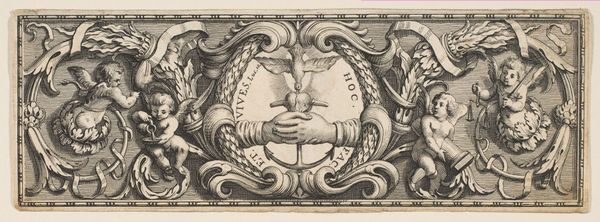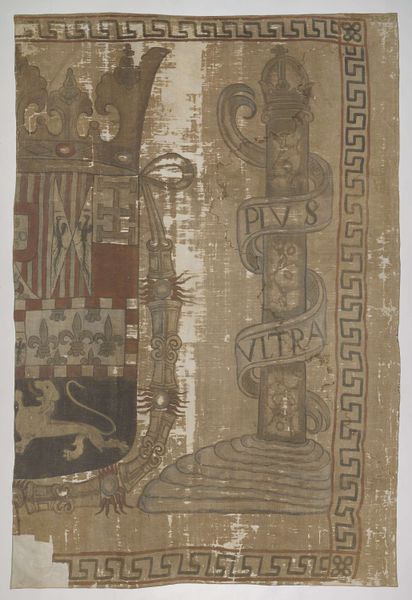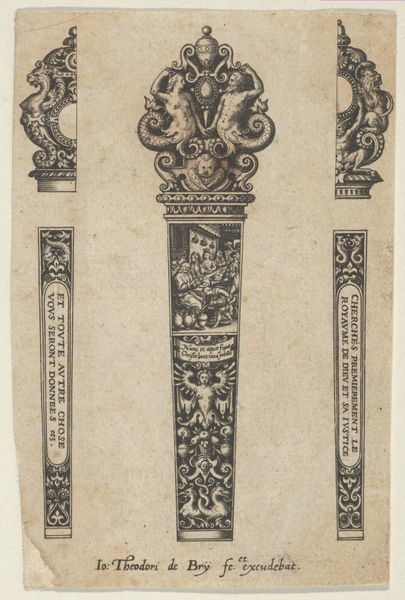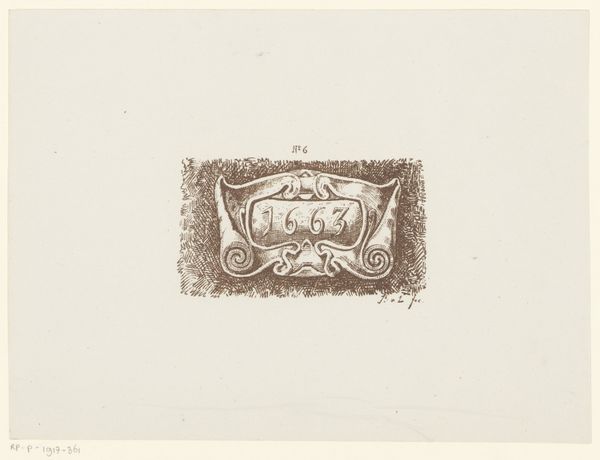
natural stone pattern
naturalistic pattern
dog
repetitive shape and pattern
ethnic pattern
organic pattern
vertical pattern
intricate pattern
pattern repetition
layered pattern
funky pattern
Dimensions: height 362 mm, width 538 mm
Copyright: Rijks Museum: Open Domain
Curator: Allow me to introduce Antoon Derkinderen's "In den Avond," believed to be from around 1897. Its symbolic density really strikes me. Editor: My first impression is how muted and serene this piece feels. The limited palette creates a sense of stillness. Curator: Absolutely. And the stillness, I believe, speaks volumes about the artist's commentary on societal expectations of devotion and gendered labor. Note the figures’ placement within zodiacal symbols. Does that offer a context of determinism perhaps, of predefined roles? Editor: The monochromatic execution definitely lends itself to emphasizing form, making us notice the contrast between the flat planes and the intricate patterning of the borders. Was this likely intended as a design for a larger decorative piece, given its potential for mass production? Curator: Quite possibly, and Derkinderen was invested in exploring spiritual dimensions—he lived in a period ripe with questioning faith. Consider the placement of those androgynous angelic figures—they’re flanking what looks like a symbolic flame or sacred space. I'm particularly drawn to the way that traditional religious iconography and the Zodiac come together, challenging conventional piety. Editor: Yes, but let’s think about what this symbolic flame *is* actually composed of: intersecting timber and, beneath, a prominent sword. It looks less like simple devotion and more like constructed artistry. To me, these objects hint at craftsmanship and its role, contrasting with notions of pure spirituality. What labour went into creating this effect of quiet piety? Curator: Interesting. Looking at it through that lens, those seated figures suddenly take on new dimensions. What power structures underpinned the creation and reception of these archetypes? This may be a powerful argument about gender, power, labour, and the politics embedded within so-called sacred objects. Editor: Right. By deconstructing the artistic components and its material conditions, perhaps it compels us to reassess those predetermined roles from within an environment of production. Curator: Examining how this work operates as both cultural artifact and designed object really reframes its place in late 19th-century symbolist art. Thank you, this piece offers much food for thought on faith, gender, and labour! Editor: And how focusing on both material and ideology brings a deeper awareness of artistic creation to us!
Comments
No comments
Be the first to comment and join the conversation on the ultimate creative platform.

